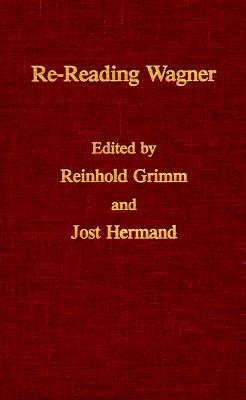
- We will send in 10–14 business days.
- Author: Reinhold Grimm
- Publisher: University of Wisconsin Press
- ISBN-10: 0299970760
- ISBN-13: 9780299970765
- Format: 15.8 x 23.5 x 1.4 cm, hardcover
- Language: English
- SAVE -10% with code: EXTRA
Reviews
Description
Nearly a quarter of the population of Budapest at the fin de siecle was Jewish. This demographic fact appears startling primarily because of its virtual absence from canonical histories of the city.
Famed for its cosmopolitan culture and vibrant nightlife, Budapest owed much to its Jewish population. Indeed, it was Jews who helped shape the city's complex urban modernity between 1867 and 1914. Yet these contributions were often unacknowledged, leading to a metaphoric, if not literal, invisible status for many of Budapest's Jews. In the years since, particularly between the wars, anti-Semites within and outside Budapest sought to further erase Jewish influences in the city. Appellations such as the "sinful city" and "Judapest" left a toxic inheritance that often inhibited serious conversation or scholarly research on the subject. Into this breach strides Mary Gluck, whose goal is no less than to retrieve the lost contours of Jewish Budapest. She delves into the popular culture of the city's coffee houses, music halls, and humor magazines to uncover the enormous influence of assimilated Jews in creating modernist Budapest. She explores the paradox of this culture, which was Jewish-identified yet lacked a recognizable Jewish face. Because much of the Jewish population embraced and promoted a secular, metropolitan culture, their influence as Jews was both profound and invisible.EXTRA 10 % discount with code: EXTRA
The promotion ends in 18d.21:46:58
The discount code is valid when purchasing from 10 €. Discounts do not stack.
- Author: Reinhold Grimm
- Publisher: University of Wisconsin Press
- ISBN-10: 0299970760
- ISBN-13: 9780299970765
- Format: 15.8 x 23.5 x 1.4 cm, hardcover
- Language: English English
Nearly a quarter of the population of Budapest at the fin de siecle was Jewish. This demographic fact appears startling primarily because of its virtual absence from canonical histories of the city.
Famed for its cosmopolitan culture and vibrant nightlife, Budapest owed much to its Jewish population. Indeed, it was Jews who helped shape the city's complex urban modernity between 1867 and 1914. Yet these contributions were often unacknowledged, leading to a metaphoric, if not literal, invisible status for many of Budapest's Jews. In the years since, particularly between the wars, anti-Semites within and outside Budapest sought to further erase Jewish influences in the city. Appellations such as the "sinful city" and "Judapest" left a toxic inheritance that often inhibited serious conversation or scholarly research on the subject. Into this breach strides Mary Gluck, whose goal is no less than to retrieve the lost contours of Jewish Budapest. She delves into the popular culture of the city's coffee houses, music halls, and humor magazines to uncover the enormous influence of assimilated Jews in creating modernist Budapest. She explores the paradox of this culture, which was Jewish-identified yet lacked a recognizable Jewish face. Because much of the Jewish population embraced and promoted a secular, metropolitan culture, their influence as Jews was both profound and invisible.

Reviews